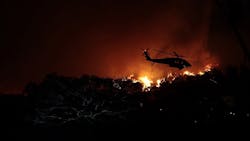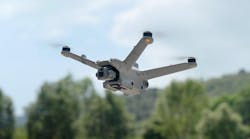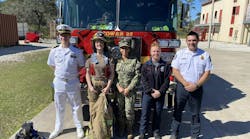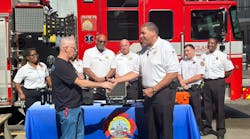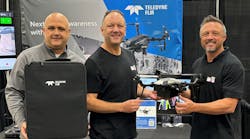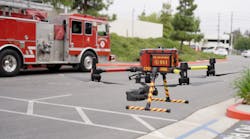Pilot Robert Delleo has been flying for the N.C. Forest Service for 10 years and says it’s not unheard-of to hit a bird as you’re skimming just above the treetops over a wildfire.
What he really worries about, though, is the possibility of hitting a drone, which fly at that same altitude and are just as impossible to see when you’re moving at more than 200 mph.
“Birds are flesh and bone. They have a tendency to give, though they do damage to airplanes,” says Delleo, who directs the Forest Service’s aviation division. “But if we were to run into a drone, which are not flesh and bone, it would be catastrophic.”
Twice this spring, the Forest Service has encountered drones while its aircraft have been flying over wildfires. That prompted Steve Troxler, the secretary of agriculture, to put out an bulletin this week reminding people that it’s a felony for a drone to damage or interfere with a manned flight and to urge people to keep their drones away from wildfires.
“To put it simply, drones and firefighting aircraft don’t mix,” Troxler said in a statement. “If you fly, the firefighters can’t. Aerial collisions between drones and aircraft could occur. Due to these safety concerns, when drones are spotted near wildfires, aircraft must land or move away to other areas.
“This means no fire retardant or water can be dropped,” he continued. “No tactical information can be provided to firefighters from above, and homes or other property could be put at risk if wildfires grow larger.”
The two drone encounters this spring were the first for the Forest Service, Delleo said. In March, a Forest Service helicopter was dropping water on a fire just outside Wilkesboro when someone noticed a drone flying overhead. The copter had to move away until the drone operator was found. Later, the Forest Service learned that a second drone had been shooting photos of the fire only when it showed up on TV, Delleo said.
Delleo was involved in the second brush with a drone, over a fire in Pender County in April. Pender County EMS was flying a drone on one side of the fire and didn’t know that Delleo’s plane was overhead.
“They didn’t know that we were coming, and we didn’t know that they were there,” he said. “I flew through the smoke across the fire from west to east, and when I came out of the smoke on the east side of the fire, they saw me.”
Delleo said the Forest Service has since gotten word out to police, sheriffs and fire departments across the state not to launch a drone over a wildfire without notifying the agency first.
“We don’t want to stop these local agencies from using these drones,” he said. “We just want to make sure that when they’re using them, we’re not there.”
The Federal Aviation Administration issued a similar warning to drone operators.
It’s not known how often these kinds of incidents take place. In its annual safety report.
“As the use of UAS is rapidly increasing, so too is the related risk of associated incidents and/or accidents,” the report said, referring to unmanned aircraft systems. “One of the main concerns is the unpredictability of the operators and inability to pinpoint their location.”
The N.C. Forest Service has 22 helicopters and planes, including two tankers, based in Kinston, Sanford and Hickory. Delleo said the agency’s patrol planes are in the air almost daily during fire seasons, which run from mid-February through May and from about mid-October through the end of November, when humidity levels are low.
The Forest Service has responded to nearly 4,200 fires a year statewide on average since 2015.
———
©2019 The News & Observer (Raleigh, N.C.)
Visit The News & Observer (Raleigh, N.C.) at www.newsobserver.com
Distributed by Tribune Content Agency, LLC.
